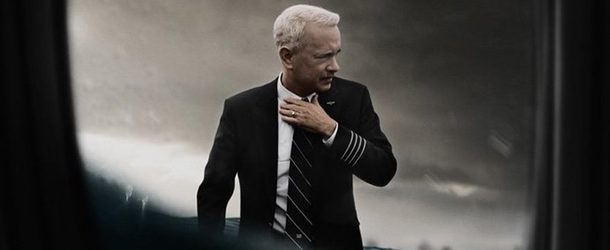Clint Eastwood and Tom Hanks bring the true story of Chesley “Sully” Sullenberger to the big screen this weekend.
It’s been a short seven years since The Miracle on the Hudson occurred. It doesn’t feel like that long ago and a dramatized version does not feel quite earned yet. Yet, there’s a story to be told, even if it is largely simple.
Tom Hanks plays the titular Sully. We catch up with him after the flight where he landed in the Hudson River and saved 155 passengers and crew members after both engines went down. The majority of the movie follows Sully as he stresses about possible legal hearings and the constant media attention he’s hounded with. He’s clearly shaken after the landing and things aren’t made better as his judgement as a pilot is questioned.
Sully is joined in the hearings by his co-pilot, Captain Skiles (Aaron Eckhart, sporting a Tom Selleck-esque mustache). Just as he supported Sully in the cockpit, he supports the decisions made and the great outcome that took place.
I went into this movie knowing little other than the news reports of his heroism back in 2009. I wasn’t sure how that story could be spread into even its short 96 minutes. Essentially, the movie jumps through different times in his life, and focuses on the water landing itself. It is shown a number of times. While redundant in the movie, there’s something about a plane crash that calls out the natural fear that we all have. The crash scenes are tense, even though we all know how it ended. My biggest gripe with the repeated views of the crash are that a different perspective should have been shown each time. Eastwood flirts with the idea of showing the terror of the passengers, but keeps skipping over to other perspectives and takes away from the immediate terror that would happen if the power goes down in a gliding plane.
Eastwood finally brings it all together with the final depiction of the crash. It essentially puts you into the mind of a pilot who is trying not to panic in a literal life-or-death situation.
The major issue I have with Sully is the over-dramatization of everyone surrounding Sully. Laura Linney literally phones it in as Sully’s wife and seems wasted in a role that could have been left on the cutting room floor. The NTSB (National Transportation Safety Board) investigators are depicted as condescending, smarmy villains. Yes, from Sully’s point of view, they were probably annoying, but shouldn’t be viewed as antagonists.
Sully is an average movie that takes a roundabout approach to tell a simple story. Yes, it’s hero worship, but movies like this are welcome at times. However, because it’s such a simple story, there was no clear way to end it. The final few minutes of the movie are wrapped in such a neat bow that it feels ripped from a 1940s Frank Capra film, but without the actual drama that preceded a deserved happy ending. C+










Comments are closed.